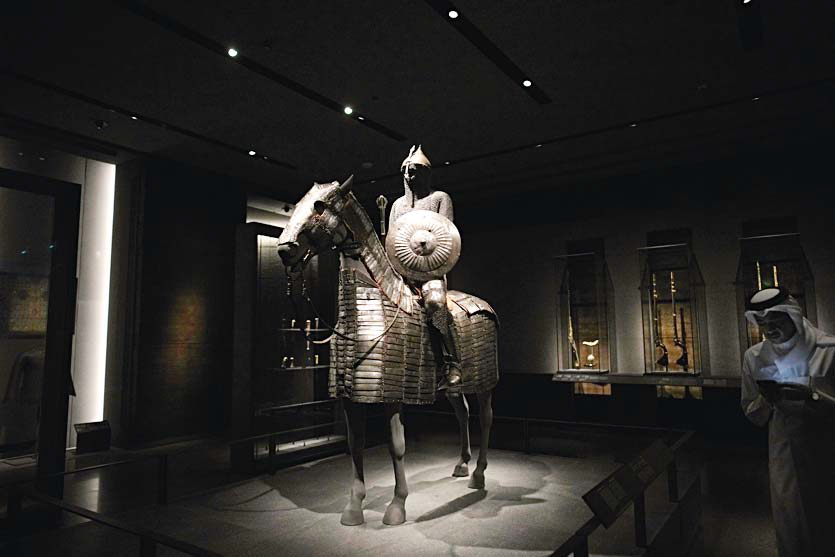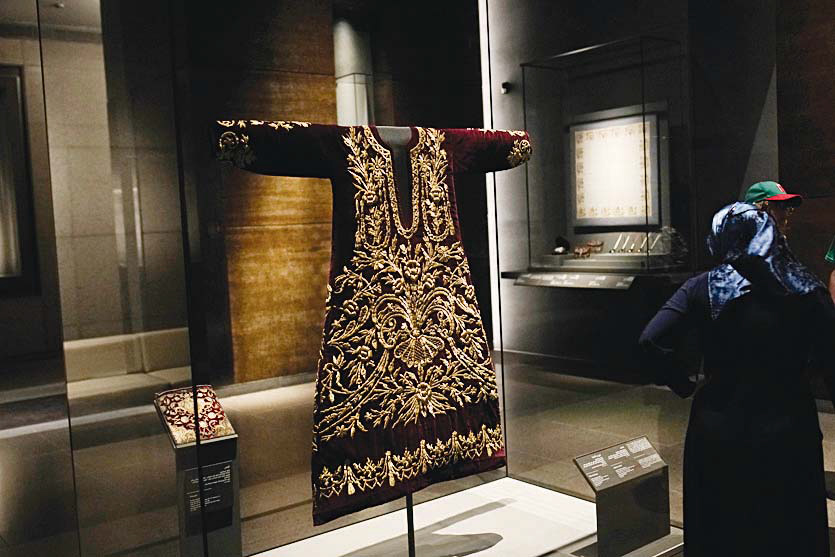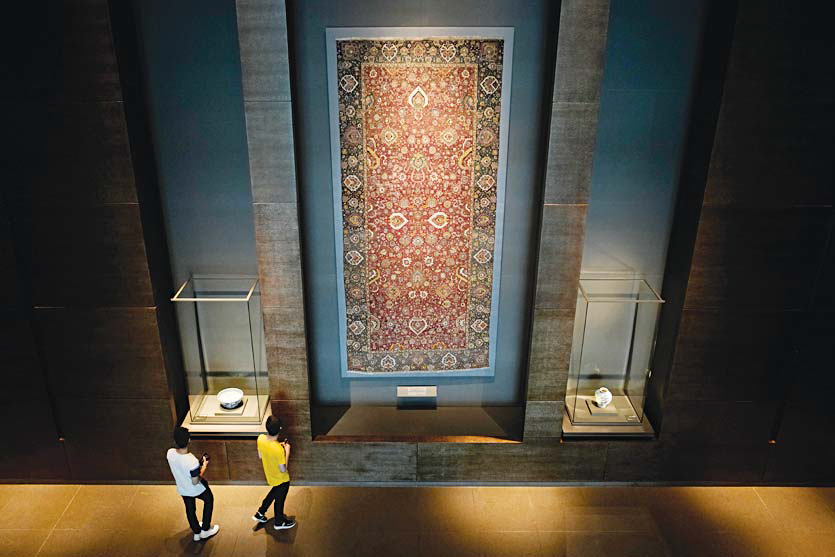11/12/2022
11/12/2022
DOHA, Qatar, Dec 11, (AP): An emerald inscribed for a Mughal emperor. A Safavid-period knotted wool carpet. An Ottoman-era curtain, intricately embroidered with metal threads, which was part of the covering of the Kaaba, the cube-shaped structure in Makkah that Muslims consider the metaphorical “house of God.” Like tiles in a mosaic, the collection in Doha’s Museum of Islamic Art, or MIA, provides visitors with a peek into diverse aspects of Muslim heritage, art and craftsmanship with items spanning three continents and many centuries. In a capital where so much is new, the museum showcases a variety of the old and historic.

And with soccer fans from around the world descending on Qatar, the story that the museum tells now has more listeners. On a recent day, visitors - some wearing soccer jerseys or scarves - stopped to snap photos, inspect an object, read a label or browse shelves lined with books and souvenirs. “The architecture itself is very good. Also, I like the inside displays; the pieces are very impressive,” said Bert Liu, who lives in the United States. “Before I knew very little about Islamic history but after I saw a lot of objects, I feel I learned more.”

Qatari officials say they hope the tournament will help provide visitors with a better understanding of their culture and that of the larger region. The World Cup host has faced intense criticism over rights issues, including the treatment of migrant workers, and accusations of “sports washing” or attempting to use the event’s prestige to remake its image. Qatari officials have argued that the country’s progress and achievements are being overlooked.

The ruling emir, Sheikh Tamim bin Hamad Al Thani, said some of the attacks on the first Arab and Muslim country to host the World Cup included “fabrications and double standards.” Sports is not the only area where Qatar, a small country with big ambitions and the vast wealth to match, has sought to leave its mark as part of a quest for global influence. It has also been aiming to carve out a name in the culture and arts arenas, including with museums like MIA. “Qatar has invested much in terms of establishing itself as a Middle Eastern hub for culture and art with soft-power aspirations being a key factor driving these efforts,” said Giorgio Cafiero, CEO of Gulf State Analytics, a geopolitical risk consultancy based in Washington, D.C.
“Museums in Doha have done much to help the Qataris promote their culture, tell their stories, and share their unique perspectives with global audiences.” And now, he noted, many soccer fans may be visiting the region for the first time. Qatar is far from alone in such grand, well-financed cultural endeavors, with other Gulf countries also vying for tourists as they strive to diversify their economies.
Diversity
“We have the ambition to show Islamic culture in all its diversity and sort of also show the regional differences,” said Julia Gonnella, MIA’s director. “The idea is really for education, for diversity, also to build up a society beyond oil and gas.” The museum attracts both Muslim and non-Muslim visitors, she said, adding that MIA’s “first audience” is the people who live in Qatar. Designed by renowned architect I.M. Pei, the MIA complex has a presence that is somehow both imposing and simple, with its waterfront location, light-colored exteriors and sharp and clean architectural lines. Geometric shapes and Islamic motifs appear inside. Windows drench the surrounding area in sunlight and provide a view of modern looking buildings jutting into the sky across the water.
The museum’s collection includes metalwork, ceramics, woodwork and textiles. Items on display include jewelry, manuscripts of the Quran, the Muslim holy book, armor and arms. Gabriel Petersen, who visited from Australia, said he was impressed by how old some of the objects were and enjoyed seeing exhibits from different parts of the world. “It’s just a different culture,” he said. “You don’t get much of that in Australia.” The museum also offers glimpses into religious beliefs and rituals. Visitors can read about the five pillars of Islam - the profession of faith, prayer, alms giving, fasting and hajj or pilgrimage - or learn about hajj rituals and different funerary practices in the Islamic world. Initially opened in 2008, the museum closed in April 2021 and reopened a month before the World Cup with expanded interpretive materials to help provide more context for items on display. A temporary exhibition titled “Baghdad: Eye’s Delight” celebrates the capital of Iraq as one of the “most important and influential cities in the Islamic world” and highlights its role as a city “of power, scholarship, and riches,” according to the museum. The exhibition features objects on loan from world-renowned institutions, MIA says.


